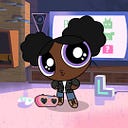Member-only story
The Shorthand Of Film
I’ve been paying closer attention to the images filmmakers use to tell their stories. A film is a time-intense form of media, in that the actual filming itself needs to take place within a certain amount of time, after which, the images are edited, to happen within a certain time frame. To that purpose, filmmakers use every tactic in their visual dictionary to tell the story, as expediently as possible, which means there is almost no wasted imagery. If it’s on the screen, especially if it's a recurring image, or a prominently featured one, then there’s usually a reason for it, and it’s something the director wants you to notice.
I wrote earlier about how the composition of people and objects within the frame, tells the audience which objects are of primary importance. This is just as true of things like set design and the objects themselves. When directors use the objects, and the design of the set, to help push the narrative, set the tone and location, denote themes, and character, this is called, “visual shorthand”. The point is to give the viewer a large amount of information without anything having to be said. Many of us are so steeped in Western film imagery that we interpret these images on an almost unconscious level.
For example, in early television shows, a visual shorthand of the Western was the sight of tumbleweed. Despite that these specific plants can be found in…
